Sony Walkman NW-ZX707 Introduction
A lot of people would say that smartphones are the go-to for on-the-go music, and there’s good reason to say so. Smartphones offer a good suite of connectivity options and a lot actually sound decent when paired with good headphones. So, you get all that, plus everything else that a smartphone can do. Convenience is perhaps the best word for it.
That being said, there’s still a chunk of market for dedicated music players. These are the people who want to extract every bit of detail and the best sound from their source files, utilizing hardware that’s specifically designed for the task. Some are willing to spend a good chunk of money to hear that difference, no matter how big or small.
This is where devices like the Sony Walkman ZX707 comes in. As the newest addition to the brand’s lineup of premium dedicated audio players, it sits below the WM1A Mark II and above the NW-A306 in terms of price point. While it shares a lot of the features with a typical a smartphone, it does have a few tricks up its sleeve that make it more ideal for listening to music.
Design and Build Quality
I was fortunate enough to own several Walkman devices in the past. The cassette player, an E-series which I would say is very inspired by the iPod nano in terms of design, an A-series which was built like a tank, and lasted many years, and a ZX300, which was a candy bar style device with a touch screen.
The ZX707 is built around a milled aluminum frame that gives it just the right weight and volume, while also being comfortable to hold. Up top are two headphone jacks, a standard 3.5mm and a 4.4mm balanced.
Just like the ZX300, Sony has chosen to stick to dedicated buttons on the side, so you don’t have to pull the device out of your pocket just to adjust the volume or skip tracks. Some buttons also have a part that’s just slightly raised, so you’ll know which one is the volume up, and the play/pause button. There’s even a hold switch to prevent unintended button presses.
The right side houses the microSD card slot, which I would imagine will be very useful since the ZX707 only has 64GB of storage. Lastly, at the bottom is a USB-C port. Thank goodness, they’ve finally gotten rid of the proprietary WM-Port.
The back is covered in a leather-like material, and the top section slightly raised to add more room for more components inside. There’s also a bit of Walkman branding, which adds to the premium look.
On to the display – it’s a 5-inch TFT screen with HD resolution. Not really what you’d expect for something that costs PHP 44,999. It’s responsive enough, but you can’t help but feel the sluggishness at times. Colors are also a little dull, and text isn’t as sharp.
Where the ZX707 differs from a phone is in the hardware that makes it a specialized device for audio. There are a number of things that Sony did here in terms of improving sound quality.
- Large and Solid High-Polymer Capacitors for clearer vocals and powerful, accurate bass.
- FT CAP3 (High Polymer Capacitor) for smoother sound, wider sound space, improved transparency, and tighter bass
- Large coil for balanced output delivers improved sound resolution
- OFC (Oxygen-Free Copper) milled block for clearer sound
- S-Master HX Digital Amp and Film Capacitors for reduced noise and distortion
- Milled Aluminum Frame for stable, high-quality sound
Those are just some. Since of course, it’s not like you’re going to open the Walkman and look at each thing one by one, let’s just say that all of these things contribute to getting a clean sound that’s faithful to how it was produced.
For sound testing, I used my Sony XBA-N3 on the 3.5mm output (unfortunately, I couldn’t find a dongle for a 4.4 balanced connection in time, so I may have to update this review in the future). We’ll find out just how better (or not) this sounds when compared to a phone. I’ll be using local FLAC files hopefully with a diverse enough library of songs.
Walkman ZX707 settings – Direct Source ON, no enhancements enabled. Default firmware. Do note that the sound quality will also depend on many other things, such as the quality of the source file, and the pair of headphones you’re using. This is merely my interpretation using the gear that I have.
Bass
In Gen Hoshino’s Comedy, the bass when using the OnePlus 11 as the source, is very pale in comparison to the ZX707. It’s not night and day, but I could definitely discern the punchiness when using the Walkman. It’s also bass that’s not plain, but detailed but never overpowering.
Vocals
In The Weeknd’s Die For You, compared to the OnePlus 11, the vocals when using the ZX707, are noticeably clearer, crisper, and fuller in texture. Layering for the vocals and the rest of the track is also very noticeable, as if it’s able to zero in on the vocals and expose your ear to the details.
Soundstage
I’m not sure if it’s because my ears aren’t discerning enough or if it’s because I’m using IEMs, but I couldn’t really tell that much of a difference in terms of soundstage, both offer the usual, slightly enclosed feel but not to the point that it’s uncomfortable, and definitely not too in your face.
Treble
Compared to the OnePlus 11, the Treble when using the ZX707 sound cleaner, and more stable. It delivers enough emphasis without sounding too sharp, but I wouldn’t really describe it as warm, but airy, which is something I prefer. And this is with the volume cranked up to around 90/110. As such, I think that this is also great for long periods of listening.
The ZX707 was able to drive the XBA-N3 without issues, and as for the Sennheiser HD660s, I had to crank it up to around 100-105/110 to get a decent enough volume, which isn’t bad, but there’s very little room left there.
For wireless users, the ZX707 also support LDAC, aptX HD, aptX TWS+, and aptX Adaptive. Allowing you to enjoy good quality sound through your TWS Earbuds or wireless headphones.
Software
While a lot of other Android-based DAPs run on outdated versions of Android, the ZX707 surprisingly runs on Android 12, hopefully, with an update to future versions too.
The user interface is close to if not stock Android. Apart from the Sony Walkman and Headphones Connect app, it’s as clean as it gets. You get access to the Google Play Store without having to sideload anything. It also means that you can install your favorite streaming apps like Spotify and Apple Music and they should work without any issues or tweaks needed.
Thanks to its large screen, the ZX707 can be the perfect backup device in case your phone isn’t available for watching videos on YouTube.
Performance-wise, it’s not the smoothest, as you will run into stutters every now and then, but it’s not deal breaking and doesn’t ruin the experience.
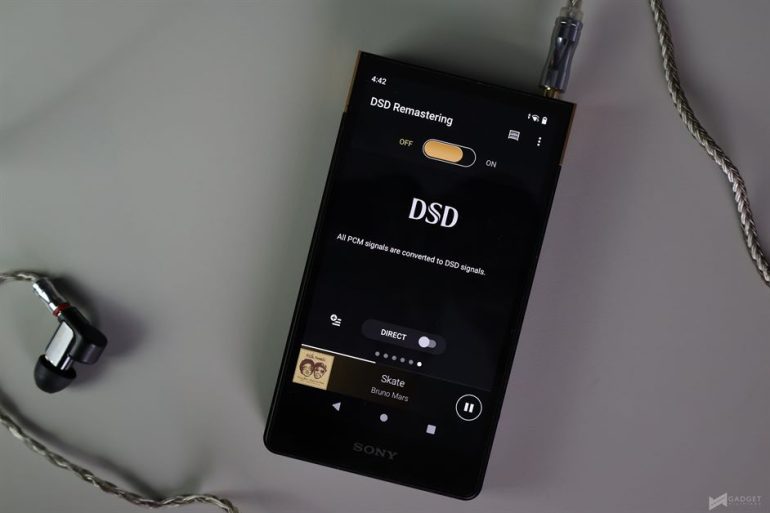
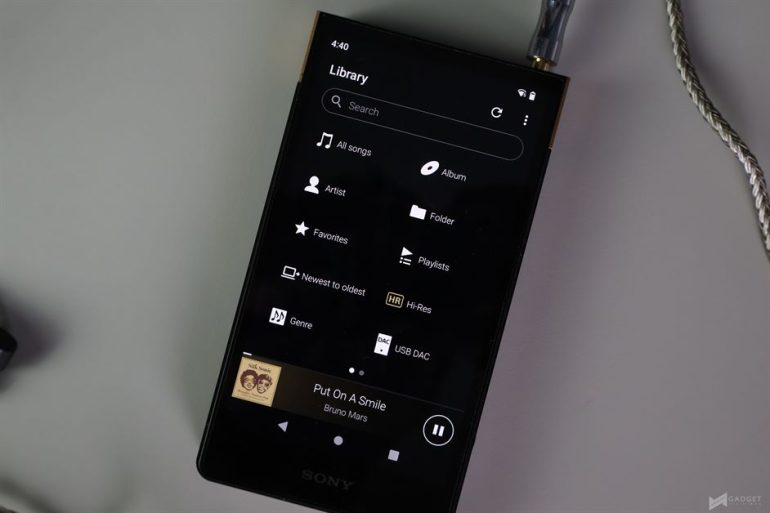
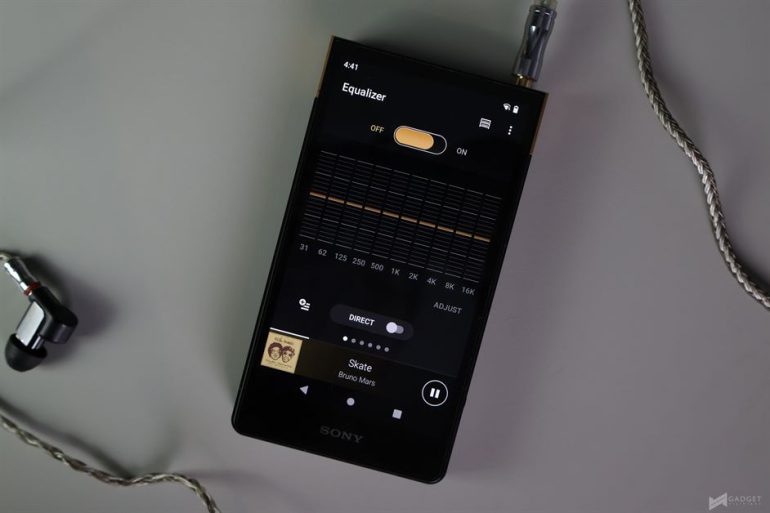
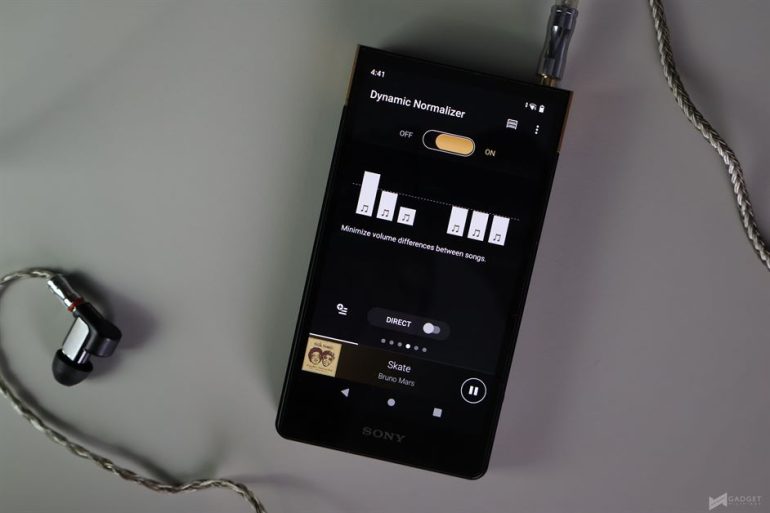
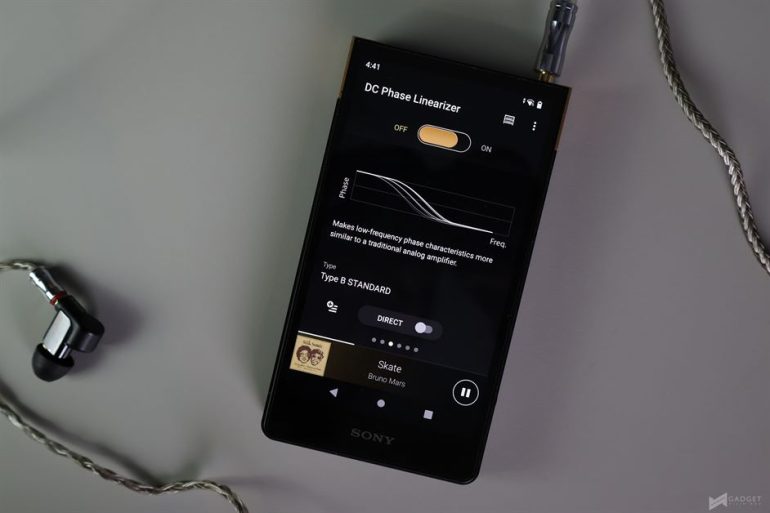
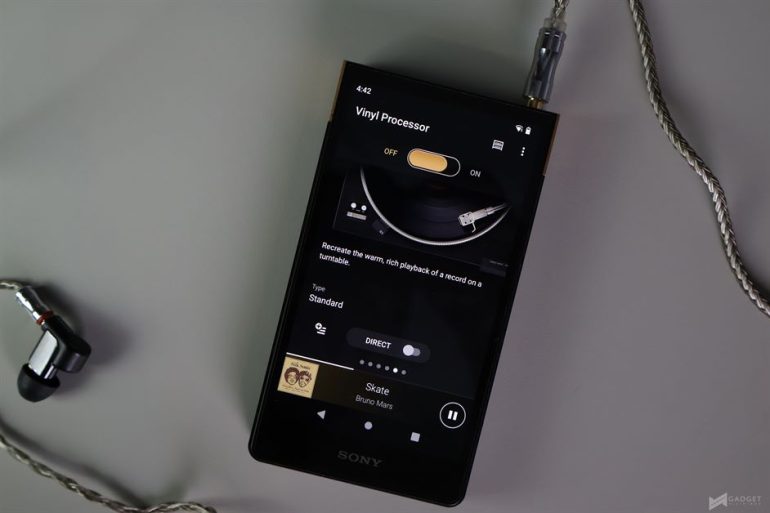
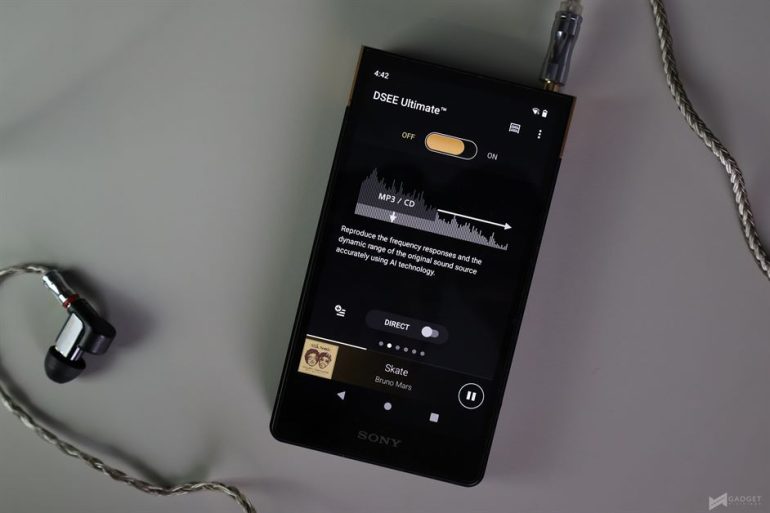
If you’ve used a Walkman before, at least a model with a screen, then you will notice that overall theme is the same here. You’re greeted with a main screen that lets you discover tracks based on artist, album, etc. Swiping up reveals the Now Playing screen which shows the album art and playback controls, and swiping up again shows the more in-depth settings, starting with the equalizer.
Now, I personally don’t use any of these, except for the Dynamic Normalizer, which minimizes the volume difference between songs, but most of these will have a noticeable effect on the sound.
Battery
The ZX707’s battery life will depend on a number of factors such as whether you’re playing files locally or if you’re streaming via Wi-Fi, volume, screen brightness, and more.
For my time with the device, I usually had to recharge every other day or every two days at most. Playing local files, it has more than enough longevity to last for at least a full work day at the volume I use it on, which is around 80 to 90/110.
There is no charging brick included in the box, but you do get a USB-C to USB-A cable.
Verdict
So, is the Sony Walkman NW-ZX707 better than my OnePlus 11 for music? definitely. My ears are able to tell the difference in the sound quality, at least in the tracks I’ve tested, and it’s a lot. I also love the design, the big display, finally getting a USB-C port, and the stock Android approach.
There are of course, things that could’ve been done better. The display, for instance, could’ve had a better resolution, overall performance of the user interface needs improvement, and 64GB of storage for a device that’s supposed to hold lossless files, in 2023 – definitely not a good idea.
Then there’s the physical limitation, which is it’s another device that you have to take with you, and another device that you have to store and take care of during travels. Lastly, there’s the difference between our ears. Not every ear will be discerning enough to tell the difference, also factoring in what headphones you’ll use, and the quality of your source files.
While I will personally recommend it as a good buy, I still strongly suggest that you try it out with your own ears and your own gear first before deciding.
For more information, click here.
Source: Gadget Pilipinas

0 Comments